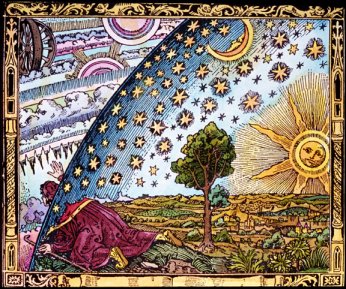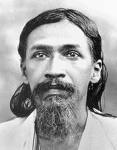Integral Health
The metaphysical basis for Integral Health — Spirit and Matter
The conflict between the votaries of Matter and Spirit has yet to be solved. The glorification of Matter has come at the cost of the adventure in the realms of Spirit. Material prosperity has been achieved by devaluing spiritual ideals. On the other hand, spiritual riches have very often blossomed in the impoverishment of material life. The call of the Spirit had been so encompassing and overwhelming that generations of mystics and seers had abandoned the lure of Matter and dispensed with the comfort of material life. Yet the call of the Time-Spirit today is neither to ignore Matter nor to ignore Spirit. The world has experienced the extremes of material prosperity and spiritual austerity. An exploitation and over-indulgence of Matter has led also to disastrous consequences ranging from drug abuse to terrorism. A world of competition has triggered a plethora of stress linked diseases. A hedonistic culture has culminated in diseases like Aids. An excessive exploitation of natural resources has resulted in grave ecological imbalances. And the world suffers while a host of spiritual luminaries are absorbed in meditative contemplation in the security of hermitages far away from the battle of life. The ideal solution of the conflict between Matter and Spirit would be the flowering of spirituality in material life. Such a metaphysical poise would be of great pragmatic value in all areas of life ranging from education to health. However the key to the reconciliation of Matter and Spirit still remains an enigma.
In Chapter IV of The Life Divine, Sri Aurobindo follows a unique way to reconcile Matter and Spirit, the two apparently irreconcilable principles because they represent two distinctly different paradigms. There are two general ways of reconciliation — the first is to understand and interpret the terms of one paradigm (viz. metaphysics) in terms of another (viz. science). Thus, on reading the ancient Indian Spiritual formula — ‘One becomes Many’, the contemporary rational intellect immediately discovers a similarity with the Big Bang theory of creation. But in reality these two ideas belong to two different paradigms, which cannot be forcibly reduced in terms of one another. When the Vedantist declares that ‘One becomes Many’ — he is talking about a phenomenon occurring in consciousness — a phenomenon that cannot be understood in terms of linear temporality. It is a phenomenon that needs an understanding of both the dimensions of time and timelessness. It cannot be equated with the way we linearly conceptualize the ‘temporal history’ of creation vis-à-vis ‘the Big Bang’.
In fact, Sri Aurobindo did not approve the idea of forcibly reducing terms of Science in terms of Metaphysics or vice versa. In his Evening Talks recorded by A.B. Purani, he has been reported to suggest that one could simply state that certain conclusions of science matched certain conclusions of metaphysics. This would be a more realistic way of conceptualising things.
The second method of reconciliation is to construct an eclectic model by selecting the best out of everything. This is how people try to ‘integrate’ science and spirituality. Yet, eclecticism in the end is a sort of ‘compromise’, a ‘bargain’. A novel reconciliation would actually be something that achieves a distinction on its own merit — a new integer in a set of numbers.
Sri Aurobindo opts for a third way of reconciliation. He considers consciousness per se to be the basis, matrix and gestalt of existence in whose bosom Spirit and Matter are ‘distinct’ formations. Everything that exists is a formation of consciousness and different formations have different distinctive identities so as to manifest a richly variegated, multifarious and complex play of existence. (It is this Aurobindonian perspective that later stimulated transpersonal psychologists like Wilber to formulate concepts like the ‘Spectrum’ of consciousness.) Yet if all these distinct formations in the spectrum or hierarchy or graded worlds of consciousness would lose their distinctive positions, there would still exist the matrix of consciousness in which they manifested. The basic matrix of consciousness also equally holds in its bosom principles which are yet to manifest. Sri Aurobindo(1) explains:
”The rooted and fundamental conception of Vedanta is that there exists somewhere, could we but find it, available to experience or self-revelation, if denied to intellectual research, a single truth comprehensive & universal in the light of which the whole of existence would stand revealed and explained both in its nature and its end. This universal existence, for all its multitude of objects and its diversity of faces, is one in substance and origin; and there is an unknown quantity, X or Brahman to which it can be reduced, for from that it started and in & by that it still exists.” (pp.181-2)
In continuation of this line of thinking, Sri Aurobindo explains that a particular formation must outgrow one’s ‘distinct’ identity to rediscover the ground or matrix from which it evolved and which is the matrix of all manifested and unmanifest principles. If the formation in question seeking its ground reality is a human being in time, then he/she must outgrow his/her egocentric poise to expand from the individual into the cosmic consciousness. The cosmic consciousness is the matrix that holds both Spirit and Matter, the meeting place where one becomes relevant to the other. If one can expand into the cosmic consciousness, then spirituality can blossom in material life. That is why Sri Aurobindo states that in the cosmic consciousness, ”Matter becomes real to Spirit, Spirit becomes real to Matter (2)”. It is a uniquely practical reconciliation, where without losing their distinct identities, both Spirit and Matter can complement each other and fulfill themselves. (Of course, the manifestation of spirituality in the world of material reality will also require a movement from the superconscient ‘transcendence’ into the cosmic and individual consciousness — a mere extension from the individual to cosmic consciousness is not enough to overcome the resistance of the inconscience and the downward pull of the inertia of Matter. But nevertheless, the cosmic consciousness provides the matrix for the manifestation to take place.)
He uses the word real instead of equal as he does not favour reducing Spirit in terms of Matter and vice versa. As these are two ‘distinct’ and ‘unique’ paradigms, they cannot be ‘equal’. To maintain their ‘distinct’ identities, they must have their ‘differences’. But, they both have a common base and a ground-reality, and both can be meaningful to each other.
In the Integral Health paradigm, it is consciousness that is the basis and framework of working. Rather than holding a particular organ at fault for its malfunctioning, one has to work on the total consciousness to find out the source of disharmony for which a particular organ has become a scapegoat or sacrificial lamb. In some cases, the factors causing disharmony can be better analysed in material terms while in some other cases, the sefactors causing disharmony are better interpreted in non-materialistic terms viz. psychological, social, cultural or spiritual. Therapeutic modalities can be designed accordingly. In the same vein it can be said that it is not merely the immune system that is crucial for building up the defence mechanism of the body but the consciousness behind the immune system. Even in the midst of a deadly and highly contagious epidemic, a consciousness in poise and in harmony can remain materially unscathed.
One might argue how a particular therapeutic target can be related to consciousness as a whole. In the paradigm of Integral Health, nothing is viewed in isolation. A therapeutic modality targeted at a certain focus can become dynamic when its effect sends ripples in harmony with the total consciousness. It is in the movement from disharmony to harmony and in the integration of the scattered parts of the being around an ego-surpassing principle that the essence of Integral Health lies. Such an endeavour provides a practical field of reconciliation of Spirit and Matter.
References
1. Sri Aurobindo. Collected Works of Sri Aurobindo, Volume 12. Pondicherry: Sri Aurobindo Ashram Publication Dept; 1997.
2. Sri Aurobindo. Collected Works of Sri Aurobindo,Volume 21. Pondicherry: Sri Aurobindo Ashram Publication Dept. 2005, p. 30.
Share with us (Comments, contributions, opinions)
When reproducing this feature, please credit NAMAH, and give the byline. Please send us cuttings.



